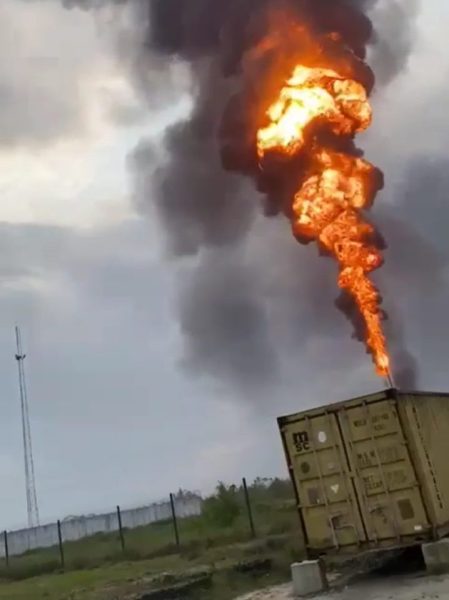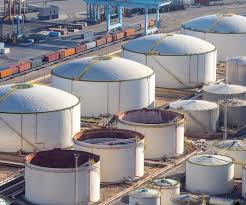
Mkpoikana Udoma
Port Harcourt — Seplat Energy Plc has denied reports of an unusually intense gas flare at its Qua Iboe Export Terminal, QIT, on March 25, 2025, despite multiple eyewitness accounts and environmental groups insisting otherwise.
Responding, Seplat Energy in a statement denied reports of an elevated flare, stating “There was no elevated flare in QIT during the reported period. The flare in the video footage circulating in the media is not from any of our facilities.”
The company further reiterated its commitment to “operational excellence, environmental care, and sustainability, with utmost regard for the communities where we operate as well as our people.”
However, eye witnesses, community groups and environmental activists have challenged Seplat’s denial, insisting that they witnessed the heightened flare and even captured it on video.
Gas flaring has long been a contentious issue in the Niger Delta, with Ibeno in Akwa Ibom State, being one of the most affected areas.
The community hosts the Qua Iboe Export Terminal, QIT, a major crude oil export facility that was formerly operated by Mobil Producing Nigeria Unlimited, MPNU, before Seplat Energy Plc acquired it in December 2024 in a $1.28 billion deal.
For decades, MPNU’s operations in OMLs 67, 68, 70, and 104 have been linked to continuous gas flaring, raising concerns over air pollution, climate change, and public health risks.
According to the Nigeria Extractive Industry Transparency Initiative, NEITI’s Oil and Gas Audit Reports, MPNU paid a total of $67.7 million in gas flare penalties between 2021 and 2023 for these assets. Despite Nigeria’s gas flaring regulations, oil companies continue the practice, arguing that full elimination requires massive infrastructure investments.
On March 25, 2025, residents of Ibeno reported an unusually intense flare from Seplat’s QIT facility, describing the heat and smoke as unbearable. The incident has reignited calls for stricter enforcement of environmental regulations and greater transparency from oil companies operating in the region.
Reacting, the Ibom PEER Foundation condemned the elevated gas flare from Seplat’s QIT in the morning and midday hours of Tuesday, March 25th 2025, noting that it had been confirmed by both its field officers and community members.
“The unusual flare was not only confirmed by our field officer who was at the QIT area at that time, but also by community actors who were eyewitnesses to this explosion.
“We want to put it on record that MPNU left a legacy of flaring gas that it could have used to generate electricity for local communities in Ibeno, Eket, and Esit Eket LGAs, but it chose instead to pollute the air, destroy the ecosystem and divested its assets against community and civil society demanding to restore the environment before divesting.
“Now, four months after Seplat took over MPNU’s assets, the company is still flaring gas, sending a dangerous signal that it is going to be business as usual,” said Mfon Gabriel, Executive Director of Ibom PEER Foundation.
Citing data from the Nigeria Oil Spill Detection and Response Agency, NOSDRA’s Gas Flare Tracker, the group revealed that between November 2024 and January 2025, Seplat flared a total of 7.862 million MSCF of gas across four oil mining leases – OMLs 67, 68, 70, and 104.
Also, the Network Advancement Program for Poverty and Disaster Risk Reduction, NAPPDRR, who confirmed the elevated flare on March 25th 2025, also raised concerns about the impact of gas flaring on local fisheries.
“Fishes are dying as a result of the rise in temperature,” said Helen Bassey Eyo, Program Officer at NAPPDRR.
Eyo further called on Seplat and the Nigerian Upstream Petroleum Regulatory Commission, NUPRC, to provide copies of their Environmental Management Plan, EMP and Environmental Impact Assessment, EIA, reports for QIT.
Similarly, Dr. Fyneface Dumnamene Fyneface, Executive Director of YEAC-Nigeria, dismissed Seplat’s response, calling on the company to release its CCTV footage to back up its claim.
“I am surprised that Seplat is trying to deny elevated flare on its facility on that day, even when we captured the flare on video. The question is, is Seplat flaring gas in the Niger Delta? The answer is yes.
“The heightened flare was captured on video. If Seplat is denying that they had elevated flare on March 25, 2025, I challenge them to provide the 24-hour video footage of the CCTV operations of their flare towers on that day.
“I dismiss the denial of Seplat with a wave of my hand because I know it is a common practice of oil operators to deny environmental degradation caused by their operations. After all, gas flaring has been outlawed in Nigeria, but Seplat, like other companies, is still flaring. And when it is heightened, they deny it—even when there is nothing to deny.
“I put it to them that there was an elevated flare at their facility in QIT, Ibeno, on March 25, 2025.”
While Seplat maintains that it is committed to environmental sustainability, residents and environmentalists are demanding that the company publish its gas elimination plan and take urgent steps to curb flaring.



